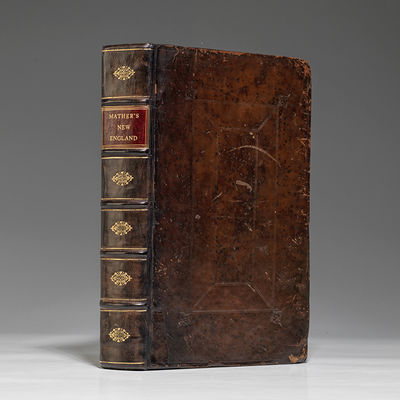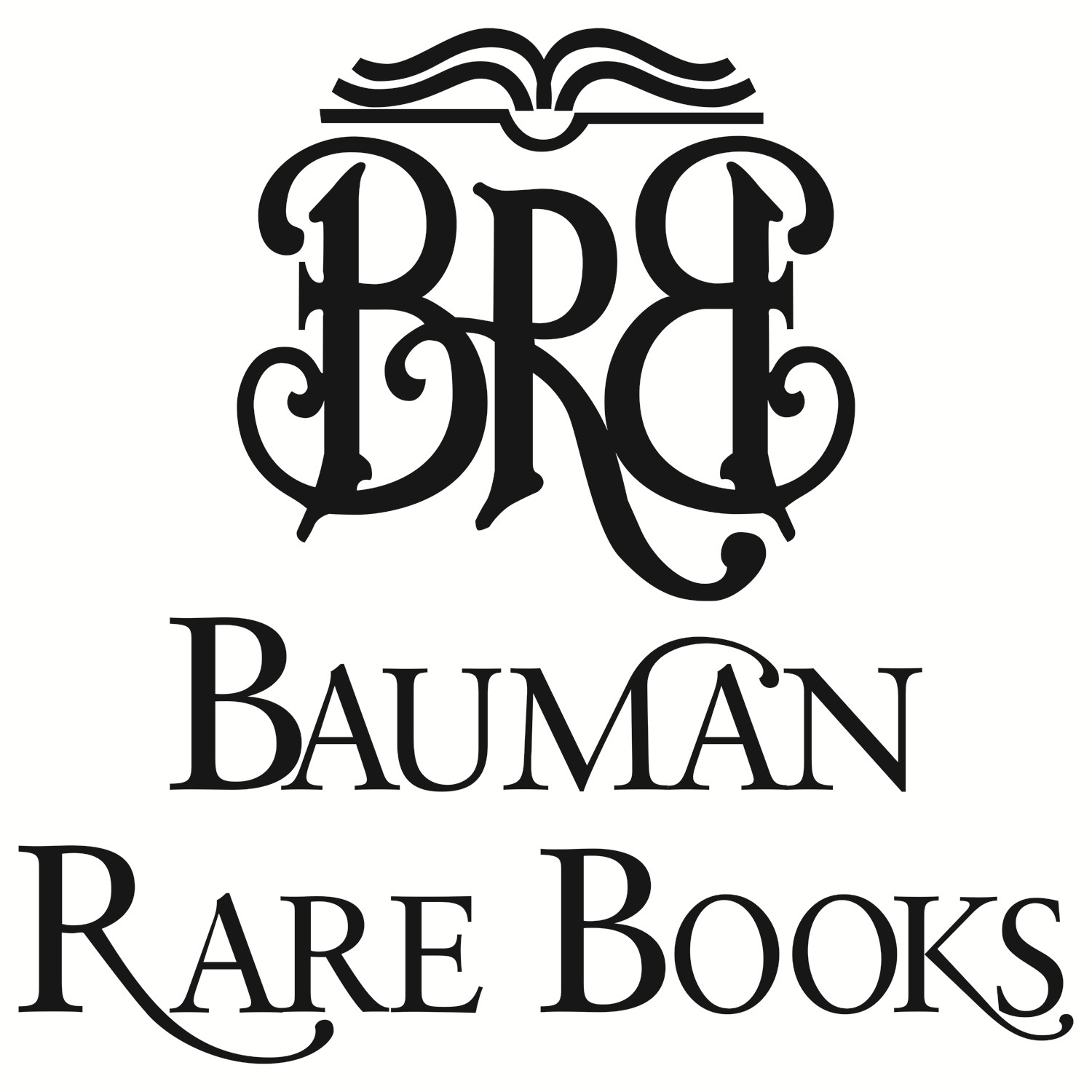first edition
1702
by MATHER Cotton
1702. First Edition. MATHER, Cotton. Magnalia Christi Americana: or, the Eccelsiastical History of New-England, from its first planting in the year 1620, unto the year of our Lord, 1698
London: Thomas Parkhurst, 1702. Folio (9 by 13 inches), contemporary full dark brown paneled speckled calf rebacked, raised bands, red morocco spine label. $15,000.The exceptionally rare and exceedingly significant first edition of Cotton Mather's salvation history of colonial Massachusetts, the ""most important 18th-century American book"" (Howes M391), including the earliest 18th-century general map of New England (often not present).No dispassionate chronicle, Mather's magnum opus is instead a monument of moral urgency and reforming zeal, ""a collection of essays, memorials and addresses intended to call a wayward generation back to the principles and practices upon which [New England] was founded"" (Magill, 557-58). In these pages, Mather portrays colonial America, most especially Massachusetts, as a land both guided by God's providential hand and threatened by the schemes of Satan. He offers numerous biographical sketchesthe most notable of his subjects arguably being Sir William Phips, Massachusetts' first royal governor, about whom the Magnalia stands as the primary contemporary source of informationand also ""preserves numerous details about the religious leaders and theological attitudes"" of his day (Peckham, 49), including such ""heretics"" as Roger Williams and Anne Hutchinson, and discussions (including some methodological critiques) of the Salem witchcraft trials. In still other portions of the text, Mather ""proves himself a master of description and narration. His circumstantial stories of shipwrecks and pirates, of Indian raids, adulteries and murders must have contributed greatly to the popularity of the Magnalia in his own day"" (Magill, 561). ""Mather's Magnalia is the most famous American book of colonial times and the indispensable source for colonial social history"" (Streeter 658). Composed beginning in 1693, the Magnalia Christi Americana remains ""among the great works of English literature in the 17th century
Somehow, as no one else can, Cotton Mather makes you by and by feel what the Puritan ideal was: if he does not tell just what men were, he does tell just what they wanted to be, and what loyal posterity longed to believe them"" (Wendell, 161). The book is also renowned for including ""the first general map of New England published in the 18th century"" (Schwartz & Ehrenberg, 133). The ""Mather map,"" present in this copy, is often missing. The first American edition of the Magnalia would not appear until 1820. Rare errata provided in facsimile on one leaf; the work is considered complete without it. The errata, ""which Mather caused to be printed here after he had received the book from England"" (Church 806), was printed well after the book and in America, and was originally printed on two leaves, with the recto of the first and the verso of the second leaf blank. Sabin 46392. Howes M391. Church 806. Three Centuries of American History, 51. Stevens, Bibliotheca Americana 1415. Streeter 658. Lowndes, 1512. Engraved armorial bookplate of Francis John Stainforth (1797-1866), British Anglican clergyman who served as a curate in London-area parishes and a collector of books, stamps, and shells. His library included, at the time, perhaps the largest private collection of books by women writers.Text generally quite clean. Folding map with neat three-inch archival repair to verso of one fold only; image clean and fine. Light wear to corners, rubbing to board edges. An extremely good, neatly rebacked copy. (Inventory #: 124644)



